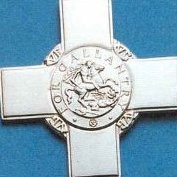Dexa Scan For Fat Percentage Not Bone Density
-
Recently Browsing 0 members
- No registered users viewing this page.
-
Topics
-
-
Popular Contributors
-
-
Latest posts...
-
100
UK Trump to Be Hosted by King Charles at Windsor: Unprecedented Second State Visit
I was talking about real Brits who love their country. -
10
Crime Brawl Erupts Among Middle Eastern Tourists in Pattaya’s Soi Yensabai
identify deport and banned forever from entering Thailand -
99
Report Race Against Time: Bangkok May Be Below Sea Level by 2030
1970s Ice age coming ..... we'll all freeze to death. 2000s Global warming ..... we'll all die from the heat. 1990s Peak oil ....... we'll all die when we run out. 2010s Net Zero ...... we'll all die if we keep using oil. It's only a matter of time before they start telling us the sea levels are reducing so much we'll all die from it.- 1
-

-
145
Kissing on the mouth
More than likely Malcolm prefers to push his stool in.- 1
-

-
3
WISE Problems, July 2025 edition
I successfully did Wise transfers to Kbank on Tuesday 15th and Wednesday 16th and both arrived in seconds. So working OK for me. -
1
Economy Thai Farmers Sound Alarm as US Trade Talks Threaten Local Agriculture
Thailand needs to be protected from food dumping of low quality foods. Many banned in EU due to practices that result in lower quality - e.g Rat hairs in processed meat products, and allowable faecal contamination (cow<deleted>) in processed meat products, bovine somatotrophin hormone in milk, etc. There are good foods from USA - cheeses from Wisconsin, Massachusetts & New England in general. Grass-fed beef of free range cattle from many ranches is of very high quality, for example.
-
-
Popular in The Pub



.thumb.jpeg.d2d19a66404642fd9ff62d6262fd153e.jpeg)










Recommended Posts
Create an account or sign in to comment
You need to be a member in order to leave a comment
Create an account
Sign up for a new account in our community. It's easy!
Register a new accountSign in
Already have an account? Sign in here.
Sign In Now